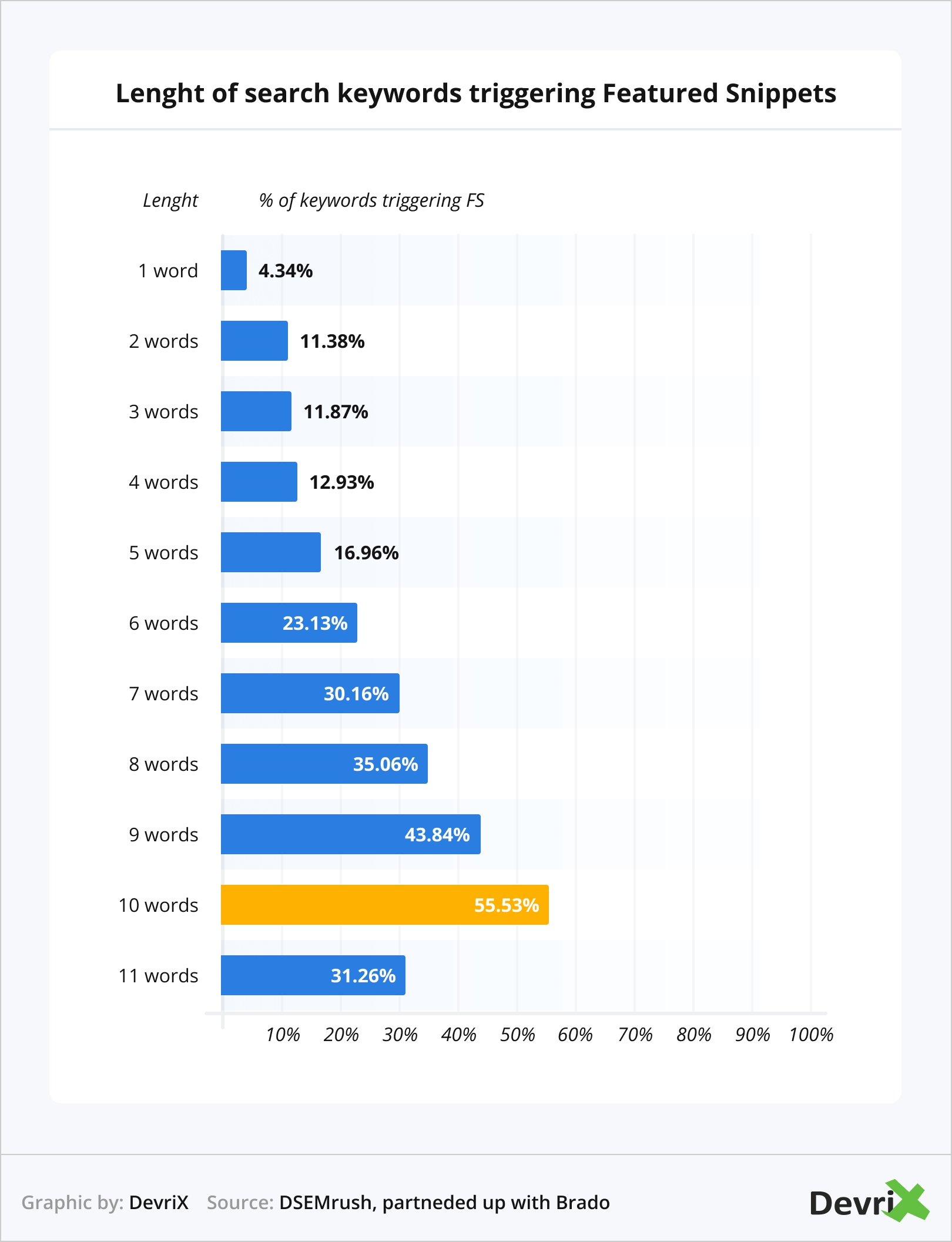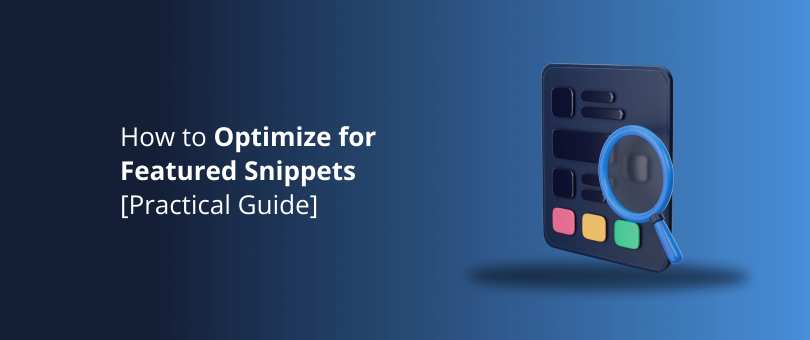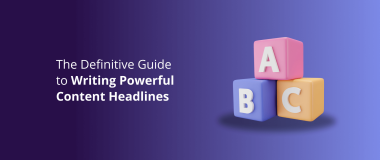Have you noticed how certain Google searches display an information box at the top of the page?
These are called featured snippets, and they usually contain a direct answer to your query.
However, not all search queries have such a snippet. In fact, only 19% of SERPs have a featured snippet, but this does not mean they are insignificant.
On the contrary, click-through rate could be significantly increased, depending on the query, intent, and content of the snippet features.
We will help you understand what featured snippets are all about, how to optimize for them, and when you should try to rank for one.
Ready? Set? Go!
What Is a Featured Snippet?
In simple terms, featured snippets are selected search results. They aim to give a direct answer to your search query or highlight important information that is most probably relevant to what you’re looking for.
Of course, the goal of these snippets is to save the user time and present the most relevant piece of content – it could be statistics, lists, definitions, etc.
But before we continue, let’s have a look at an example of a SERP containing a featured snippet.
Featured Google Snippets: Example
In this example, the search query is “foursquare statistics”. Given how the keywords contains “statistics”, the search intention is probably informational, I.e., the user is looking for stats about this platform.

As you can see, the featured snippet is at the very top of the page, even above the first result (although below the paid ads, if such are applicable), hence SEO specialists refer to it as position zero.
Google has pulled out this snippet from review42’s article, as it is of the highest search relevancy. However, this does not mean that another website can’t outperform them and rank for that position zero.
Additionally, there’s a “People also ask” box displayed, which is another form of a snippet. Again, the goal of PAA boxes, is to provide a concise answer to a particular question.

Keep in mind that every question could contain an answer from a different website, although it’s not impossible to rank for each of them, provided that you’ve written and optimized your text well.
All this is nice for the users, although, you still might be wondering what the benefits are of snippets from a business point of view?
Here’s why.
Why Are Featured Snippets Important for SEO?
Featured snippets are important for SEO due to the fact that they can provide your brand with additional exposure, bring in more traffic, and increase search engine visibility.
On top of that, securing a featured snippet can result in higher click-through rates, and attract more customers to your website. Not to mention, it’s an extra SERP feature that puts you one step ahead of the competition.
Here’s a summary of featured snippet benefits:
- Increase search visibility
- Boost brand recognition
- Improve click-through rates
- Attract customers
- Bring more traffic
Keep in mind that 99% of featured snippets are from results that already rank on the first page, which really signals that you should first try to penetrate, in order to stand a chance to rank for a snippet.
Now, let’s talk more about the different types of featured snippets.
Types of Featured Snippets
Generally, there are six types of featured snippets you can rank for on Google.
- Bullet list
- Numbered list
- Paragraph
- Table
- Video
- Questions (PAA)
Bullet Lists
It’s always a good idea to include bullets lists in your articles. They make information easier to comprehend, and they summarize the key points. Plus, they are useful to users who just skim through the article.

Bullet point lists are especially useful when you’re writing about statistics, since there generally isn’t an exact numbered order you need to follow.
Numbered Lists
Numbered lists are practically the same as bullets lists, with the main difference that items could have a logical reason to be numbered.

If we take a look at this example, we see that in this instance, it’s better to structure a numbered list, instead of one with bullets.
Paragraphs
Paragraphs, also referred to as definition boxes, are used to directly respond to a query with the intent of finding a definition or description.

In our example above, the definition box answers the query the best, as its title talks about the best ways to store onions. It is a clear example where it wouldn’t make too much sense to optimize for a bullet/numbered list.
Table
Table snippets usually contain data, and it’s especially useful to apply it regarding prices and dimensions.

This way you save yourself the trouble of going to the website and looking for prices. Instead, you receive the data immediately. It might not sound like much, yet every click counts in this fast-paced modern world.
Video
The demand for video content has been growing steadily over the last few years, and the tendency is for video to become even more popular.

Think about it – there are certain types of queries, where it’s simply much easier to answer via video. Take a look at our example. What would you prefer – a 3-minute video showing how to replace a bathroom faucet, or a 12 steps list?
I thought so.
People Also Ask
These snippets are meant to give quick and direct answers to common questions regarding your query.

Usually, the People also Ask box features four questions, however, more questions are displayed once you click on one of them.
How to Optimize for Featured Snippets
In order to rank for a featured snippet, one must apply proper optimization techniques. Naturally, some general SEO rules have relevance, like writing unique, high-quality content.
Still, there are some specifics you need to consider, in order to optimize your content for featured snippets.
Featured Snippet Optimization Best Practices
The very first step you should take is to check if the keyword already has a featured snippet. This way, you can see whether Google prefers to rank a snippet for that query. You can also observe what type of snippet is ranking – bullet list, paragraph, table, and so on.
Targeting long-tail keywords is a good way to rank for snippets, as studies have shown.
It’s logical, when you think about it. Most of the time, when you Google search for particular information, you tend to use more search words, in order to better obtain a result that matches your question.
For example, “why is the crypto market crashing”, will display distinct results, as opposed to just typing “why is the market crashing”.
Think about what words audiences are likely to use and what your chances are of giving the best answer and ranking for that query.
Since Google prefers longer content, you should always try to be as descriptive as possible, and cover your topic in depth. Structure your content by starting with short and direct answers to questions, which you can then further elaborate on, if necessary.
Another useful featured snippet optimization tip is to include your target keyword phrase in a relevant header (H2).
Featured Snippet Word Count Stats:

- 55.5% of queries that display a featured snippet contain 10 words.
- Searches containing 7 to 11+ word trigger a 30% featured snippet display, compared to queries with 6 words or fewer. (23% to 4%)
- 29% of keywords that have a featured snippet start with a question-based word. The most popular ones are why (77.63%), can (72.40%), do (67.54%), are (67.51%), how (65.27%).
- Only 4.3% of single-word queries have a featured snippet.
Of course, it’s not just about the word count, it’s also important to follow certain guidelines on formatting your content.
Foremost, make sure that your bullet/numbered lists or definition paragraphs fit naturally into your text. Don’t just include them out of nowhere and for the sake of optimizing a snippet.
Additionally, don’t forget to regularly update your content and display a date to help users understand how fresh your content is.
Featured Snippet Formatting Tips:
- Give brief and accurate answers to questions. Try to limit them to 40-50 words (200-300 characters).
- Google algorithms prefer fresh content, since it’s more likely to be accurate.
- Date-marked content forms the majority of featured snippets: 44% of paragraph, 47% of list, 19% of table, and 20% of video snippets include an article date.
- Use relevant tags. If you want to create charts, use the <table> tag.
- Write an appropriate header (h2) and then structure information as a list.
Using the proper HTML tags is important. Don’t forget that pages are automatically crawled by Googlebot, and it’s easier for them to understand scripts.
For example, a header followed by an ordered list should look like this:
<h2>header text</h2>
<ol>
<li>Item 1</li>
<li>Item 2</li>
<li>Item 3</li>
</ol>
Related article: Why Listicles Work and How to Write a Listicle Post in 6 Steps – DevriX
Why Should You Use Featured Snippet Optimization?
Despite going through all the facts and stats, you might be wondering if featured snippets really DO matter and why you should go through all the hassle to optimize your content for them.
Imagine this.
The content you publish could be well-optimized, unique, and valuable. It could rank number 1 in the SERP for the keyword. And then…
You take a look at the SERP and see that, despite being number 1, your article is actually pushed to the bottom of the page, because of a featured snippet, PAA box, and paid results.
All your efforts could end up being thrown away, or diminished at the least.
After you’re done optimizing for snippets, you should monitor your progress to check if you’ve managed to increase traffic, click-through rates, or rankings. The easiest way to do this is to use Google Search Console, although you can also use tools like Ahrefs, or Semrush.
Summary
Not only are featured snippets a great way to support your SEO strategy, they are an aspect you should definitely focus on developing to an extent where you intuitively know how to structure your content for them.
And now it’s up to you to do your homework. Research the most appropriate keywords, update the content you already have, and rank for those position zeros.
I guarantee you’ll feel extremely satisfied with the results once you have achieved your first featured snippet!





